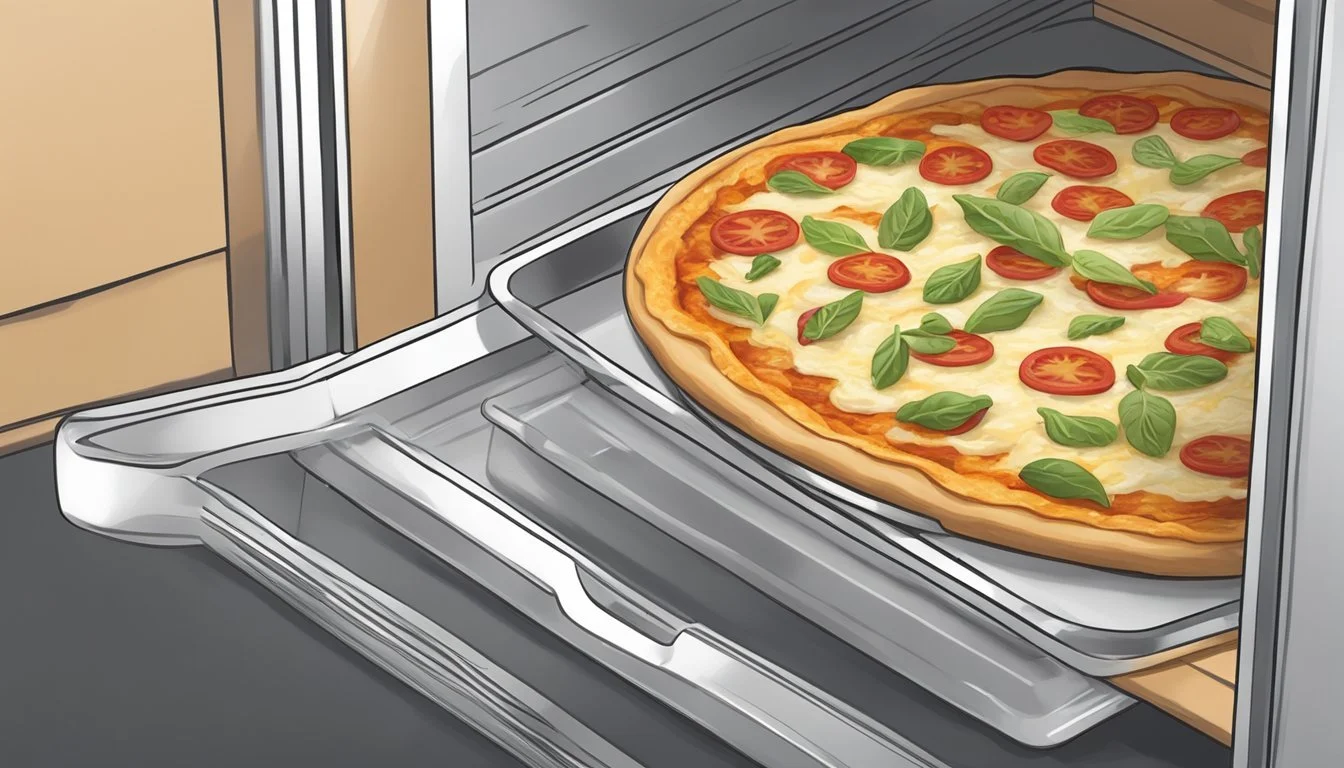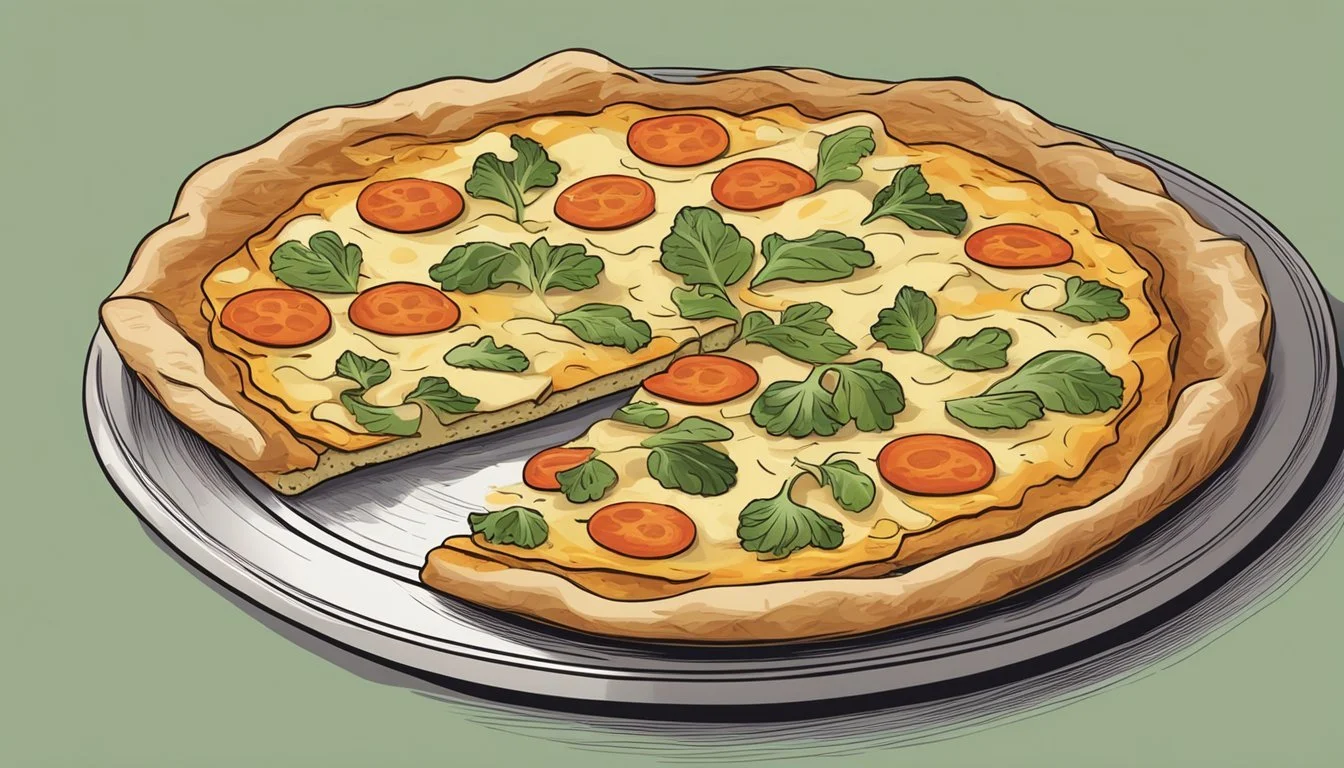How Long Does Cauliflower Crust Cheese Pizza Last?
Storage Tips and Shelf Life
Cauliflower crust cheese pizza has gained popularity as a delicious and healthier alternative to traditional pizza. It's perfect for those on a low-carb diet or anyone looking to increase their vegetable intake. One common question that arises when making or buying this type of pizza is how long it lasts.
Cauliflower crust cheese pizza generally lasts about 3-4 days in the refrigerator when stored properly. Ensure it is kept in an airtight container to maintain its freshness. For those who prefer to make a big batch and save some for later, cauliflower crust pizza can be frozen, extending its shelf life to up to 2 months.
Understanding the longevity of cauliflower crust pizza can help reduce food waste and make meal planning more efficient. Remember to always check for any signs of spoilage before consuming leftovers to ensure a safe and enjoyable eating experience.
Understanding Cauliflower Crust Pizza
Cauliflower crust pizza offers a gluten-free, low-carb alternative to traditional pizza crusts. It combines ingredients like cauliflower rice, cheese, and eggs to form a nutritious base suitable for various diets.
Ingredients and Recipe
Ingredients:
Cauliflower Rice: Grated or pulsed in a food processor.
Egg: Acts as a binder.
Cheese: Mozzarella and Parmesan.
Seasonings: Optional for flavor enhancement.
Recipe Steps:
Preheat oven to 400°F (200°C).
Prepare Cauliflower: Grate or process into fine pieces. Microwave for five minutes or steam until tender.
Remove Moisture: Squeeze cauliflower in a towel.
Mix Ingredients: Combine cauliflower, egg, and cheeses.
Shape Crust: Form into a flat circle on a baking sheet.
Bake: Until brown and crispy.
Nutritional Profile
Cauliflower crust pizza is nutrient-dense, offering a healthier option compared to regular crusts.
Main Nutrients:
Calories: Lower than traditional crusts.
Protein: Enhanced due to cheese and egg.
Fiber: Higher from cauliflower.
Carbohydrates: Significantly reduced.
Nutrient Breakdown (approximate per slice):
Calories: 120-150
Protein: 9-12 grams
Fat: 7-9 grams
Carbs: 5-7 grams
Fiber: 2-3 grams
Health Benefits
Gluten-Free: Ideal for individuals with celiac disease or gluten sensitivity.
Low Carb: Suitable for low-carb, keto, and similar diets.
Rich in Vegetables: Increases vegetable intake, promoting better digestion and nutrient absorption.
High in Protein and Fiber: Supports muscle repair and digestive health.
Versatile: Can be topped with various healthy options like vegetables and lean meats. This makes it adaptable to different dietary needs and preferences.
Preparation and Baking
For a successful cauliflower crust cheese pizza, start by preparing the crust and then move on to selecting your favorite toppings. Attention to detail in both of these steps is crucial for a crispy, delicious, and enjoyable meal.
Creating the Crust
Begin by prepping your ingredients. You need riced cauliflower, which can be prepared using a food processor. Combine the riced cauliflower, egg, grated parmesan cheese, mozzarella cheese, and garlic powder in a mixing bowl. Add a pinch of salt, pepper, and a sprinkle of oregano for extra flavor.
Remove excess water from the cauliflower by microwaving it first, then squeezing it through a cheesecloth or kitchen towel. This step ensures a crispy crust. Mix everything well until a dough-like consistency forms.
Shape the mixture onto a parchment-lined baking sheet, pressing it into a thin, even layer. Pre-bake the crust in a preheated oven at 425°F for about 10-12 minutes. This pre-baking step is essential to achieving the desired crispiness.
Choosing Toppings
While your crust is baking, you can prepare your toppings. Opt for a balance between cheesy and flavorful ingredients. Spread a thin layer of tomato sauce over the pre-baked crust. Sprinkle a generous amount of mozzarella cheese and add toppings like sliced mushrooms, fresh garlic, or even ricotta for a rich taste.
Feel free to get creative with your toppings, but be sure not to overload the pizza, as this can make the crust soggy. Once all toppings are in place, bake the pizza again at 425°F for another 12-15 minutes, or until the cheese is golden and bubbly. Remember to serve it warm for the best texture and flavor experience.
Storing the Pizza
Proper storage techniques can significantly extend the shelf life of cauliflower crust cheese pizza, ensuring it remains fresh and flavorful. Both refrigeration and freezing offer viable options.
Refrigeration
Refrigerating cauliflower pizza is straightforward. Once the pizza has completely cooled, place it in an airtight container to maintain its quality. Refrigerated cauliflower pizza generally lasts up to 3-4 days.
For best results, avoid stacking slices directly on top of each other. Separate layers with parchment paper if necessary. Before reheating, allow the pizza to come to room temperature for even warming. Opt to reheat in the oven or toaster oven to maintain crispness, rather than using a microwave, which can make the crust soggy.
Freezing Techniques
Freezing cauliflower pizza requires a bit more preparation but extends its shelf life to up to 2 months. First, allow the pizza to cool completely. Cut it into slices if it's not already done, then wrap each slice tightly in plastic wrap or aluminum foil.
Next, place the wrapped slices in a freezer-safe airtight container or heavy-duty freezer bag. Label the container with the date to monitor storage time. When ready to eat, transfer the slices directly from the freezer to an oven preheated to 425°F. Bake for 10-12 minutes or until the cheese is bubbly and the crust is crisp.
Storing cauliflower pizza properly ensures you can enjoy a healthy, delicious meal anytime without compromising on taste or texture.
Reheating and Serving
Cauliflower crust cheese pizza can be reheated using various methods to maintain its delicious flavor and texture. Here, the most effective techniques for ensuring a crispy crust and melted cheese are discussed in detail.
Oven Reheating
Preheating the Oven: Set the oven to 375°F (190°C). Preheating ensures the pizza warms evenly.
Preparing the Pizza: Place the pizza slice on a baking sheet lined with parchment paper. This prevents sticking and helps with even heating.
Reheating: Bake for about 10-12 minutes or until the cheese melts and the crust becomes crispy. For best results, place the pizza on a wire rack inside the oven to allow air circulation and prevent sogginess.
Checking Doneness: Inspect the pizza after 10 minutes. If the crust and cheese are to your liking, it's ready to serve. Adjust the time as needed.
Microwave and Other Methods
Microwave Reheating: While quick, the microwave might not keep the crust crispy. Place the slice on a microwave-safe plate. Use medium heat and cook for 1-2 minutes. For a better result, place a cup of water in the microwave to add moisture and prevent the pizza from drying out.
Stovetop Reheating: Heat a skillet over medium heat. Add a small amount of olive oil or cooking spray. Place the pizza slice in the skillet, cover with a lid, and cook for about 3-4 minutes. This method can help maintain a crispy crust.
Toaster Oven: A toaster oven can also be effective. Set it to 375°F (190°C) and heat the pizza for 8-10 minutes. The smaller space can result in faster heating.
These methods ensure your cauliflower crust cheese pizza retains its best qualities when reheated, providing a delicious meal every time.
Shelf Life and Food Safety
Cauliflower crust cheese pizza has unique storage requirements to maintain its quality and safety. Knowing how long the pizza lasts and recognizing signs of spoilage are crucial for preventing foodborne illnesses.
Expiration Guidelines
Cauliflower crust cheese pizza typically lasts for 4-5 days in the refrigerator. Proper storage involves wrapping the pizza in aluminum foil or placing it in an airtight container to minimize exposure to air and moisture.
For extended storage, freezing is recommended. The pizza can be frozen for 2-3 months without significant loss of quality. When freezing, divide the pizza into individual slices for easier reheating and store them in freezer-safe bags. Always label and date the bags to keep track of storage times.
Signs of Spoilage
To determine if cauliflower crust cheese pizza has spoiled, look for several key indicators. Visual changes include discoloration, mold spots, and a dried-out appearance on the cheese or crust.
Smell is another crucial factor; a sour or off odor indicates the pizza is no longer safe to eat. Additionally, check for a slimy or tacky texture, especially on the cheese, which suggests bacterial growth.
By adhering to these guidelines, you can ensure that your cauliflower crust cheese pizza remains safe and enjoyable to eat. Regularly checking for spoilage signs can help prevent foodborne illnesses.
Customizing Your Pizza
Customizing your cauliflower crust cheese pizza allows you to tailor it to your taste preferences and dietary needs. This section covers different vegetable varieties and dietary considerations, helping you craft a personalized meal.
Vegetable Varieties
Adding a variety of vegetables can enhance both the flavor and nutritional value of your pizza. Mushrooms, whether sautéed or roasted, add a rich, earthy taste. Onions and bell peppers can provide a sweet, slightly crunchy texture. Including black olives brings a hint of saltiness that complements the cheese.
Corn and roasted cauliflower are great choices to add sweetness and an extra layer of flavor. For a Mediterranean spin, consider adding some sautéed zucchini and eggplant. If you are a fan of leafy greens, spinach and arugula make excellent toppings. Experimenting with different veggies can keep your pizza fulfilling and exciting time and again.
To increase the savory experience, adding a mix of parmesan cheese and mozzarella with some well-chosen seasoning like dried basil and oregano enhances the taste significantly. Tomato sauce or pesto can also be used as a base, providing a robust depth to the overall flavor profile.
Dietary Considerations
For those with specific dietary needs, customizing the pizza’s ingredients is crucial. A grain-free or almond flour crust can be an excellent option for those avoiding traditional grains. Dairy-free cheese alternatives are available for those who are lactose intolerant or following a vegan diet; these provide the cheesy texture without the dairy.
Pepperoni and sausage can cater to meat lovers while maintaining a balanced meal. For those who prefer a vegetarian option, sticking with an abundance of veggies and plant-based proteins is ideal. Incorporating large eggs into the crust can enhance the crispy texture, making it fulfilling and nutritious.
Addressing dietary needs doesn't mean compromising on flavor. With thoughtful ingredient choices, you can satisfy your pizza cravings while adhering to any nutritional guidelines. Whether you opt to make or buy your ingredients, ensuring they align with dietary requirements ensures a personalized, enjoyable eating experience.








